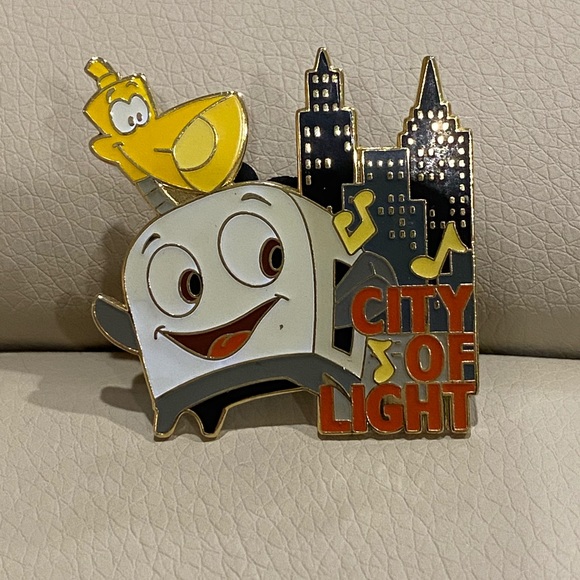

- #The brave little toaster live action remake movie
- #The brave little toaster live action remake tv
Director Jerry Rees sang the Radio's parts instead, doing a spot-on Lovitz impression.
Non-Singing Voice: Despite being an accomplished singer, Jon Lovitz did not provide the Radio's singing voice, as he had already left Los Angeles for New York Saturday Night Live when it came time to record the songs. No Budget: This film was made on a budget of $2.3 million, which was modest even for animated films at the time. This may be due to distribution rights issues. Keep Circulating the Tapes: Strangely, while the sequels are on Disney+ and other streaming services, the original film is only available on VHS and DVD. International Coproduction: Between Hyperion in America, Wang Film Productions in Taiwan and Global Communications in Japan. #The brave little toaster live action remake movie
Inconsistent Dub: Whereas the German dub of the first movie swapped the genders of Toaster and Lampy, the sequels avert and ignore this (with Toaster even being voiced by Dorette Hugo, who voiced Ariel from The Little Mermaid). For some reason, they also omitted the scene where Lampy tries to think of ways they could try and get out of the house to find the Master. Other scenes edited out from this version of the dub include the Air Conditioner's exploding rage and the appliances catching the "On Sale" sign. Apparently, the scene was thought to be too scary by Polish executives, and so that left a huge gaping hole in the storyline, and that version's Lampy with no explanation as to how she burned her bulb out.  In a version made for Polish television, the entire forest scene, a crucial one in terms of character development, is edited out of the film it just cuts straight to the waterfall scene. Lasseter remembers being thoroughly angry at the film's lack of a theatrical release. It then hobbled around the festival circuit, unable to find a distributor (thanks, Disney!), but it never found an audience until it was released on VHS, uncut and un- Bowdlerised. It was buried by the channel, and made it ineligible for Oscar nominations such as Best Original Score or Best Song. It was destined to be a box office film for the Summer of 1987 when Disney bought the film, and intended to use it for their newly created Disney Channel. Executive Meddling: The film was supposed to have a proper theatrical release, and was the first animated film ever at Sundance, where it received rave reviews. However, in the 1st dub (the rarest and hardest to find), the songs are fully dubbed and given accuarate translations. However, this is considered to be a slightly poor dub: while most of the movie's dubbing job is okay, the songs (with the exception of "City of Light", which remained entirely in English) vary between a mix of dubbing a few lines, using a Voiceover Translation, and leaving some parts in English.
In a version made for Polish television, the entire forest scene, a crucial one in terms of character development, is edited out of the film it just cuts straight to the waterfall scene. Lasseter remembers being thoroughly angry at the film's lack of a theatrical release. It then hobbled around the festival circuit, unable to find a distributor (thanks, Disney!), but it never found an audience until it was released on VHS, uncut and un- Bowdlerised. It was buried by the channel, and made it ineligible for Oscar nominations such as Best Original Score or Best Song. It was destined to be a box office film for the Summer of 1987 when Disney bought the film, and intended to use it for their newly created Disney Channel. Executive Meddling: The film was supposed to have a proper theatrical release, and was the first animated film ever at Sundance, where it received rave reviews. However, in the 1st dub (the rarest and hardest to find), the songs are fully dubbed and given accuarate translations. However, this is considered to be a slightly poor dub: while most of the movie's dubbing job is okay, the songs (with the exception of "City of Light", which remained entirely in English) vary between a mix of dubbing a few lines, using a Voiceover Translation, and leaving some parts in English. 
The 2nd dub is the most common out of the three and is the only version to be preserved on home media. Interestingly, both versions have the Toaster voiced by a male actor, instead of a female actress, while the 1st dub made Lampy a female.
#The brave little toaster live action remake tv
The 1st was done exclusively for TV in the late 90s, while the 2nd dub was done in 2000. The first was a Voiceover Translation and made exclusively for VHS in the Soviet Union, while the second two (from the Russian dubbing companies EA and ORT) are fully dubbed. The film also received three Russian dubs.It also had two Dutch dubs once in 1995 for VHS and again in 2005 for DVD.There were also two Icelandic dubs once for TV and again for home media.The movie was also re-dubbed into Japanese in 2000.Fátima Noya, who voiced Lampy in the 1996 dub, returned as Chris in the 2009 dub. In the 1996 dub, Lampy is a female, along with the Hanging Lamp, the Stereo, and the Hearse. Both re-dubs were commissioned in São Paulo, with the second dub from 1996 by Gota Mágica, and the third dub from 2009 by Studio Gábia. It was dubbed into Brazilian Portuguese three times the first was done in 1988 by VTI in Rio de Janeiro.The 2004 DVD dub improves significantly over the original. In this dub, Lampy is made a female, the non-human characters all had electronic-sounding voices and all the songs were blandly spoken, rather than sung.







 0 kommentar(er)
0 kommentar(er)
